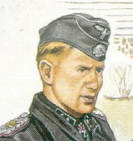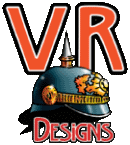JacquesDeLalaing
Posts: 88
Joined: 10/7/2016
Status: offline

|
I'm really loving the game so far and I'm taking lots of notes privately to delve deeper into the game.
I thought it could be a good idea to share some of my notes. I will keep the first post updated. There are also quite a few things that I found to be incorrect in the manual or in tooltips, marked in red.
Feel free to discuss and share your own insights! :)
-----------------------------
re. traffic points
unit movement generates traffic points like this: unit weight * 5 (manual doesn't list *5)
The manual states each supply point generates 0.1 traffic point and each fuel point generates 0.3 traffic points. From my observations ingame it rather seems to be 0.2 traffic points per supply point and roughly 0.25 traffic points per fuel point (hard to tell exactly as traffic points build up).
re. overstacking during an attack from multiple hexes
The first hex allows for 200 stacking (manual says 100)
The second hex still allows for 200 stacking
The third and each additional hex allows + 100 stacking
re. Combat Modes
Probe gives -67% attack and +50% hitpoints (tooltip says +150%), max combat rounds = 2, orderly retreat initiated at 10% losses
Recon in force gives - 50% attack and + 66% hitpoints , max combat rounds = 4, orderly retreat initiated at 25% losses
NOTE: The unit will initiate an orderly retreat at the end of round 2 (probe) or 4 (recon in force). The retreat then takes another 2 combat round. So actually you need to pay Action Points for 4 (probe) or 6 (recon in force) combat rounds!
re. Battlegroups (units without TOE)
you can add any elements to battlegroups, there is no TOE
on creation, they need to have a minimum power of 50; creating a new battle group costs 3 PP.
as there is no TOE, battlegroups don't request any replacements, so they're not part of the "automated" replacement system
they suffer a malus on their hitpoints if they have less than 50 Power, i.e. they become very brittle and prone to casualties; this malus is listed as "Battlegroup Small Size" in the detailed combat reports
the manual mentions that battlegroups suffer a base -15% attack malus, I didn't observe this ingame
re. Ranged fire actions by indirect fire elements (mortars, arty)
indirect elements do not lose their entrenchment when they fire (in contrast to direct fire elements!)
if the indirect element has a direct LOS on target, they get a bonus (+1% for each LOS%)
I suppose that other units can only "spot" for arty/mortars insofar as they provide recon points on the enemy, thus revealing enemy elements (if you don't see the enemy elements, you need to score "lucky hits" (higher chance if the hex has a lot of stacking/is very crowded) and the target gets + 100% hitpoints). Also, the number of your recon points on a hex determines the chance for your arty/mortars to conduct intercept fire (very important!).
they ignore any height advantages their targets may have (no hitpoint bonus for being on high ground)
does not suffer any "max attacked" malus (no malus for attacking enemy elements that have already been attacked a lot in this combat round)
may target "backbench" (support) elements
a lack of readiness does not make the target as vulnerable (see manual p. 103)
re. entrenchment
An element gains entrenchment points each turn according to the elements' "entrenchment cap." value (usually +40). It can never exceed the "maximum entrenchment" of the terrain in its hex though. Pioneer elements have increased "entrenchment cap" (and may also help other units in the hex, according to the latest patch notes?).
Entrenchment is lost when an element moves, is split off a unit, is merged with another unit, fires offensively (exception: indirect fire elements) or due to combat: a pinned hit subtracts 50 entrenchment points from the target, a retreat hit 100 points. However, a ranged fire action can only reduce an element's entrenchment by -33% of the initial (pre fire action or pre turn?) (my impression is: pre-turn) entrenchment points.
Implications: The better your entrenchment, the less likely you get hit (bonus on hitpoints), the less likely you lose entrenchment (chance for pinned/retreat hits). It's a cascading effect. The best way to fight an enemy's entrenchment is therefore to engage him early on (before he can build up entrenchment). If you really need to attack a strong enemy position (enemy stationary for many turns in defensible terrain), my suggestion would be to 1) recon/probe his positions (in order to gain recon points and discover his elements for your arty), 2) to hammer him with heavy artillery over a couple or turns, 3) then close in (make sure he loses his APs so that he cannot intercept fire when your combat troops approach) and 4) attack from multiple sides (concentric attack bonus; remember that there is a malus if the units come from several divisions; you should re-assign your units accordingly).
re. unit management/micro
If you create a new unit, the new unit will have 0 AP and its elements lose all of their built-up entrenchment. The parent unit is unaffected.
If you shift an element between two units, the parent unit keeps its current AP whereas the target unit loses all its AP. In addition the shifted element loses its entrenchment.
Remember that 80% of a unit's elements need to be of "transporter" type (this includes tanks!) in order for the unit to count as a transport unit. Only transport units can use the "transport" button. A unit that is being transported will have its movement type changed to that of the transporting unit at the start of the next turn and needs to move together with the transporting unit until disembarkation. Embarkation/Disembarkation does not cost any APs.
re. movement
Units always move at the speed of their slowest element. Be carefull with adding wheeled vehicles to tracked units! ("4x4 wheel" units count as "tracked", so they're fine).
re. terrain in combat
The terrain combat modifiers listed in the detailed hex tooltip are mostly incorrect (or I'm failing to understand them). The factors listed in the manual p. 102 don't seem to be fully correct either.
EDIT: It seems to work like this: If unit Alpha (positioned in terrain A) fires at unit Beta (positioned in terrain B), then unit Alpha uses its offensive atk rating and the offensive atk modifier of terrain B. Unit Beta fires back, using its defensive atk rating and the offensive modifier of terrain A. In ranged combat, both sides seem to use the offensive modifiers of the targets' terrain.
re. anti air
AA units that have a ranged fire capability also exert their AA points over range.
re. armored infantry
Halftracks have a special mechanic. Whenever an infantry element would be targeted by a combat action, there is a test (50%-50%) to see whether a halftrack element of the same unit will be targeted instead. As halftracks are hard target, this is usually beneficial against artillery.
However if - against its nature - an armored infantry unit is stationary in a defensive position, I prefer to split off the halftracks and move them out of the harm's way. As they cannot entrench as well as the infantry, halftracks are usually lost very quickly. In fact I should probably split the halftracks off before close combat assaults as well...
re. combat stats of elements
"Hitpoints" indicates how difficult it is to score a hit on the element, i.e. how vulnerable the element is. The first value is against close combat and direct fire, the second value (i) is against indirect fire.
"Hard attack" indicates how good the element is at scoring hits against hard targets. The first value is used if the the element is attacking (initiating a fire action or close combat), the second value is used if the element is defending (shooting/fighting back against attacking elements). Very confusingly, I have observed anti tank guns to use their defensive attack in offensive actions.
"Soft attack" is the same as hard attack but against non-armored targets.
re. supply
If a unit is out of optimal supply range (beyond 100 AP of the depot, green overlay), no supply points are "lost" on the way. Instead the depot just sends fewer points. E.g. if your unit is in the yellow supply area (100-150 AP distance to the depot), it receives only 75% of the points it requested. The remaining 25%, however, are not substracted from the deopt's supply points. They just never get sent.
Remember that fuel works differently than supply. Whereas supply dispatches get gradually reduced the farther the unit is away, fuel dispatches reach units either fully or not at all (no gradual reduction). E.g. A unit in the yellow (=100-150AP distance; 75% supply power) receives 75% of the supply points it demands and has a chance of 75% to receive 100% of the requested fuel points (and a chance of 25% to receive no fuel at all).
re. Recon
Recon points that you gain by combat are lost in the next turn. This usually means that the enemy unit will still be displayed in a very detailed manner in the following turns due to its "(partially) identified" status. The actual, true recon status, however, might be very poor. This is important because you need good true recon status for your artillery to be effective. Short: Just because you see a unit and its details on the map does not mean that you can target it effectively with your artillery. Always check the recon vs. hidepoints on the hex first!
re. AP and fire actions in the opponent's turn
A unit needs to have 40 AP left to conduct intercept fire.
If a unit with 0 AP is range-attacked by the enemy, it can still fire back (starting in combat round 2, as usual). So firing back against enemy ranged attacks does not require any AP.
re. Anti tank guns
In contrast to ordinary units, anti tank guns seem to use their defensive stat in offensive ranged combat. I need to check if sp. ATGS/tank hunters also work the same...?
< Message edited by JacquesDeLalaing -- 1/3/2022 7:02:15 AM >
|
 Printable Version
Printable Version










 New Messages
New Messages No New Messages
No New Messages Hot Topic w/ New Messages
Hot Topic w/ New Messages Hot Topic w/o New Messages
Hot Topic w/o New Messages Locked w/ New Messages
Locked w/ New Messages Locked w/o New Messages
Locked w/o New Messages Post New Thread
Post New Thread